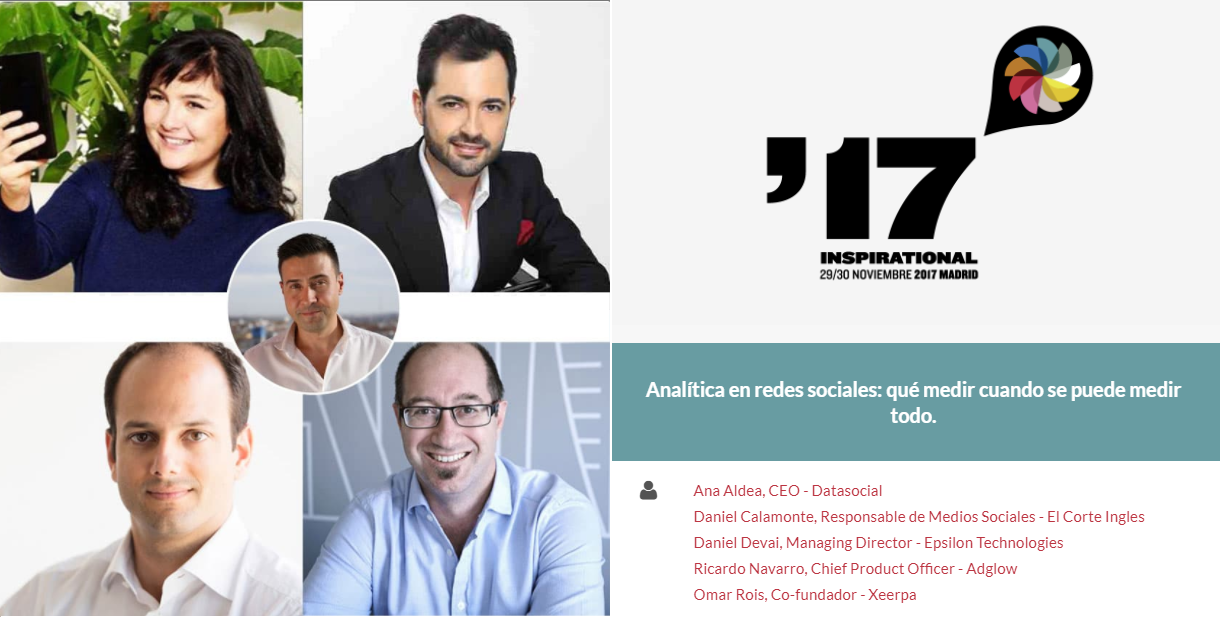On the 29th of November, Omar Rois, Xeerpa´s co-founder, moderated the round table “Analytics in Social Media: What to Measure When Anything Can Be Measured” at the #Inspirational17 Festival, organized by IAB Spain. Some of the most renowned experts in communication and digital innovation gathered in Madrid at the MEEU venue for this event.
Omar led an interesting discussion on the use of Big Data as a future tool for the analysis of social media, in which the experts Ana Aldea (Datasocial), Daniel Calamonte (El Corte Inglés), Daniel Deval (Epsilon) and Ricardo Navarro (Adglow) took part.
The main key findings are:
1. Social Media has given the companies the chance to talk, understand and adjust to the demands of its customers, whose demands are rising by the day.
2. As Social Media developed, a wide range of tools were born, such as Social Listening and Social LogIn – “the dream of every Marketing Profesional”. By mastering those tools, we can completely understand users, mixing collateral information with transactional data, and even create behaviour predictions.
3. Qualitative metrics are becoming more relevant than quantitative ones in Social Media Analytics and analysing tools are responding to that need.
4. The Data Analyst’s human factor remains essential from a Marketing point of view. The technology isn’t, for now, 100 per cent accurate when it comes to understand audiences’ reaction to contents, since one single content can have multiple effects depending on the brand’s perception in the market.
5. This “Chaos Factor” could be minimized in the near future by incorporating as many additional data as possible.
6. The Big Data Revolution –not only on Social Media– acts as a catalyser for the different areas of any company to work together. It pushes us to a cross-wise approach and highlights both the success and gaps in each department.
7. Today, most companies only analyse the top of the iceberg of Big Data, a small part of the available data.
8. It is undeniable that a lot of effort and investment are necessary to benefit and analyse all the data available for businesses. In the near future, a Data Scientist will be required in every single company.
9. The volume of data will raise in geometric progression with the IoT (Internet of Things).
10. The big challenge regarding data from now onwards will be its extraction and its activation.
11. On the other hand, people will be more aware of which data to share in exchange for what. There will be gaps that businesses will try to cover by sharing data.
12. At the end, one of the key competitive factors for companies within the same sector, will be their ability to own and analyse Big Data.


